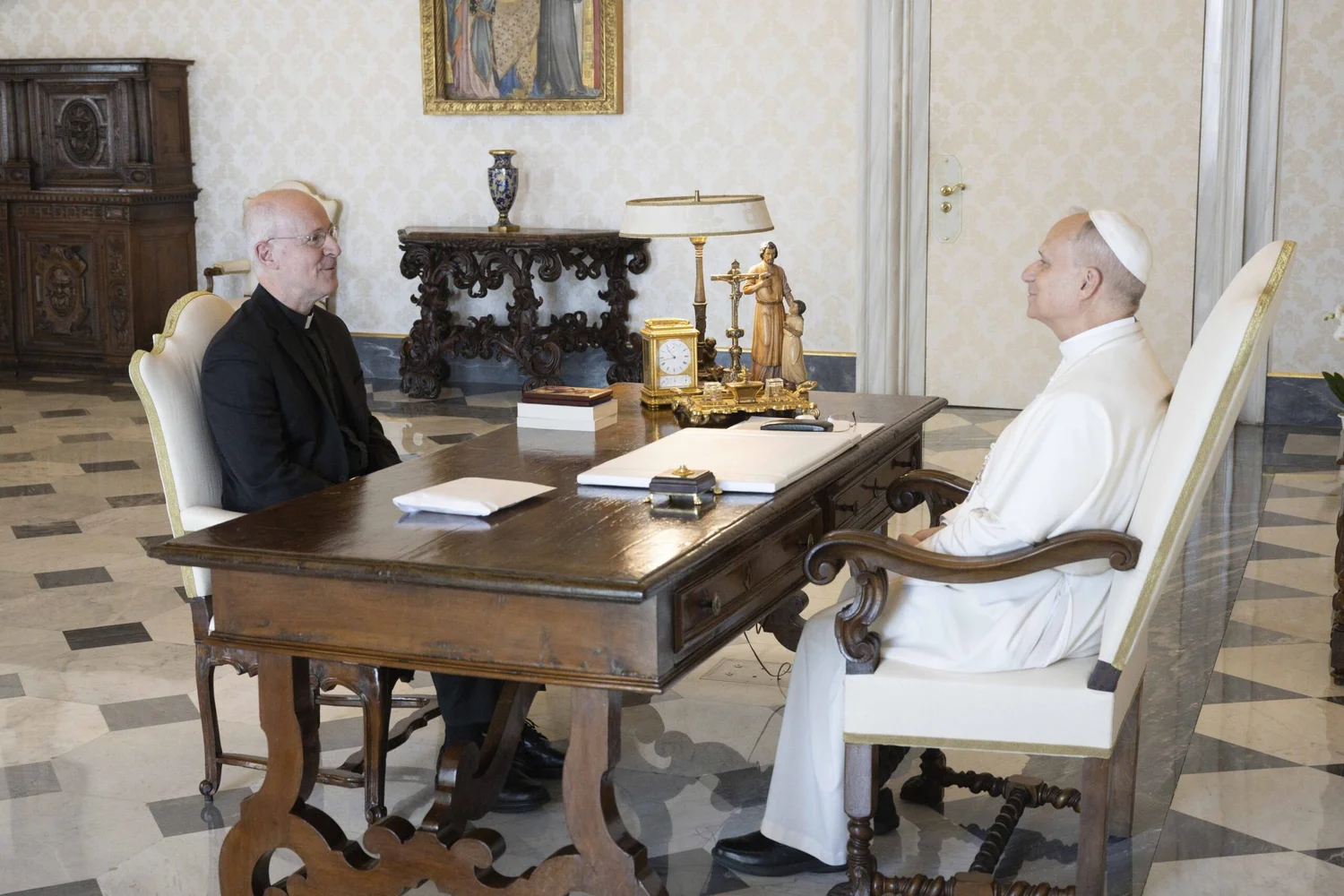Thus, Lawler would have been an excellent source to quote in the Associated Press report that served as the hook for this week’s “Crossroads” podcast. This was an alleged hard-news piece that ran with this headline: “Pope Leo meets LGBTQ+ Catholic advocate and vows continuity with Pope Francis’ legacy of welcome.” Hold that thought about Lawler, because we will return to it.
The lede on this AP report was picture perfect, from the point of view of Catholic activists seeking doctrinal change.
VATICAN CITY (AP) — Pope Leo XIV met … with one of the most prominent advocates for greater LGBTQ+ inclusion in the Catholic Church and encouraged his ministry, sending a strong signal of welcome in the early months of his pontificate.
The question, of course, is the meaning of “inclusion” and even “welcome.” Do these refer to welcoming sinners — as in everyone on planet earth — into Catholic worship, fellowship, education and confession? Or, perhaps, are these terms doorways to changes in the policies and personnel that control Catholic pastoral care or even “reforms” in doctrines?
According to the AP report, the meeting could not have gone better.
The Rev. James Martin, a New York-based Jesuit author and editor, said Leo told him he intended to continue Pope Francis’ policy of LGBTQ+ acceptance in the church and encouraged him to keep up his advocacy.
“I heard the same message from Pope Leo that I heard from Pope Francis, which is the desire to welcome all people, including LGBTQ people,” Martin told The Associated Press after the audience. “It was wonderful. It was very consoling and very encouraging and frankly a lot of fun.”
Once again, the AP report needed to talk to some informed, articulate sources — on the doctrinal left and right — who could respond to what Martin claimed happened in the meeting. This was, after all, going to be an AP story in which only one voice would describe conversation that took place behind closed doors.
Thus, I found it interesting that the Jesuit activist was a bit more candid — in a post at his own Outreach website — than the material that was included in this wire story that went to newsrooms around the world. Martin wrote:
… While LGBTQ issues are on his radar, other things may be more pressing for the time being. And even when addressing LGBTQ issues, he may not move as fast as some might like. … But my overall sense is that he “gets it” and that he is ready to continue Francis’s legacy of openness, and that is surely good news. …
There is more that I wish I could share about our meeting, but these meetings are ‘off the record’ so that the two people can speak freely.
Obviously, a news organization committed to balance and fairness needed to find conservative Catholic voices to respond to Martin’s interpretation of what Martin said happened during Martin’s encounter with Pope Leo XIV.
In social-media digital age, however, this did not require AP to actually talk to any mainstream Catholic conservatives. It was relatively easy to find conservatives who offered angry digital bytes of commentary that meshed well with Martin’s take on the meeting — without offering any new information or detailed opinions that would complicate the template in the story.
Here is what that looked like in print:
News of the audience was met with consternation among some conservatives who had criticized Francis’ outreach and had hoped Leo would be less accepting. Taylor Marshall, a podcaster active on Catholic social media, merely posted the official Vatican photo of the encounter on X. John-Henry Weston, co-founder of the LifeSite news site, called the audience a “nightmare scenario.”
Once again, note this follow-up to earlier references to “inclusion” and “welcome,’ with the note that Catholic conservatives “had hoped” — past tense, assuming that Martin’s optimistic view that change is ahead — that “Leo would be less accepting.”
This brings me to a Catholic Culture commentary by Lawler with this headline: “Father Martin meets the Pope: a scandal, but not a surprise.”
First, Lawler states the obvious:
We all knew, from the moment he was elected, that Pope Leo XIV would not repudiate the policies of his predecessor. He had worked closely with Pope Francis, who appointed him as prefect of the Dicastery for Bishops.
You see, the question for mainstream Catholic conservatives was whether Pope Leo XIV would be willing to listen to doctrinal conservatives and maybe, just maybe, find ways to offer them seats in key Vatican discussions.
Truth is, people who watch Rome closely know that who a pope promotes and who he punishes is far more important than what he says in statements to the press or even, in some cases, what is released in public documents.
Who gets a red hat in the College of Cardinals and who does not? Who is appointed to posts that shape and guide projects (the word synodality is relevant) that could, potentially, change church doctrine?
On the other side of the coin, what — if anything — may happen to bishops in Europe, especially Germany, who in recent years called for changes in ancient church doctrines on sexuality? And what about shepherds who urged their priests to begin performing church rites to bless same-sex unions?
